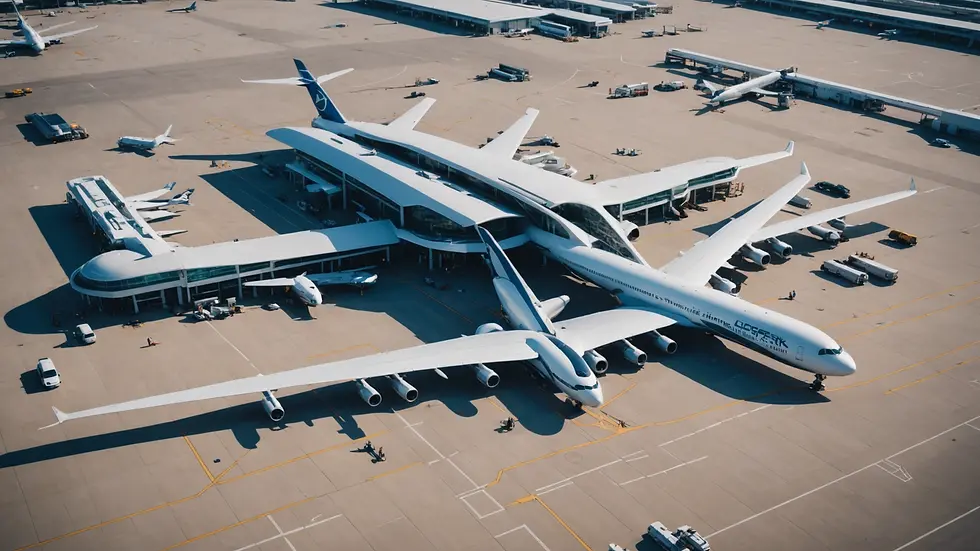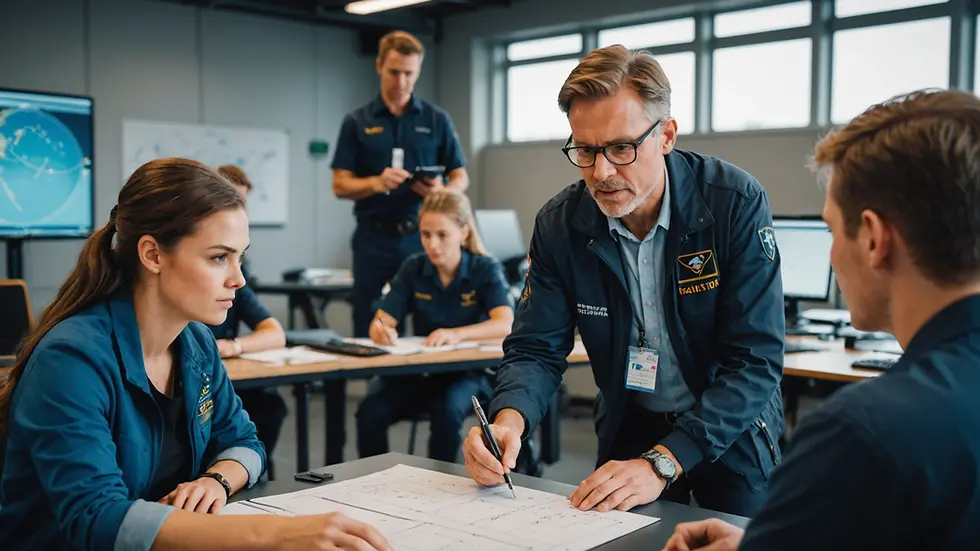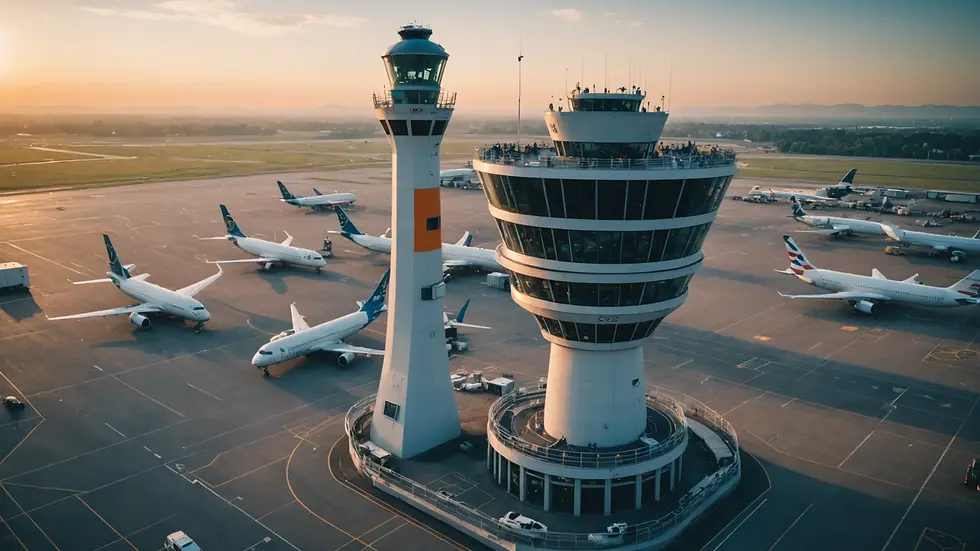Steps to Start Your Journey in Flight Dispatch
- Borys Pawlowski

- Mar 3
- 5 min read
Embarking on a career in flight dispatch can be an exciting venture for those interested in the aviation industry. Flight dispatchers play a crucial role in ensuring the safety and efficiency of flights. They are responsible for creating flight plans, monitoring weather conditions, and coordinating with pilots and crew members. In this blog post, we will explore the steps you need to take to start your journey in flight dispatch, providing you with valuable insights and practical recommendations along the way.

Understanding Flight Dispatch
Flight dispatch, also known as flight operations, is the process of coordinating the safe and efficient movement of aircraft. Flight dispatchers are the backbone of flight operations, working behind the scenes to make sure everything runs smoothly. They provide pilots with essential information, such as weather updates, route changes, and fuel requirements.
To succeed as a flight dispatcher, individuals should have strong communication skills, problem-solving abilities, and a solid understanding of aviation regulations and practices. Aspiring dispatchers should also be skilled in using various software and technology tools that facilitate flight planning and tracking.

Steps to Become a Flight Dispatcher
The journey to becoming a flight dispatcher involves several key steps. Here’s a breakdown of what you can do to kickstart your career:
Step 1: Research the Requirements
Before diving into flight dispatch, it is essential to research the requirements of the role. Different countries and airlines may have specific regulations regarding entry into the profession. For instance, in the United States, flight dispatchers must have a valid FAA Flight Dispatcher Certificate. In other countries, regulatory bodies set similar criteria.
Additionally, educational requirements may vary. While some positions may require an associate degree or higher in aviation-related fields, others might accept applicants with a high school diploma coupled with relevant training.
Step 2: Obtain Necessary Education
Once you understand the educational requirements, it’s time to pursue them. Many aspiring flight dispatchers opt for flight dispatcher training programs that provide an overview of aviation operations, flight planning, and emergency procedures.
These training programs can vary in duration but typically last between a few weeks to several months, depending on the depth of the material covered. Completing a reputable program can significantly enhance your job prospects and prepare you for the responsibilities of the role.
You can consider enrolling in a course that offers flight dispatcher training to build a solid foundation in this field.

Step 3: Gain Practical Experience
Internships and entry-level positions in aviation can be invaluable for gaining practical experience. Many airlines and airports offer internships or apprenticeships in their operations departments. Participating in these programs will allow you to apply what you've learned in training and gain hands-on experience in the field.
Networking in the aviation industry can also help you find job opportunities. Attend aviation conferences, workshops, or meetups in your area to connect with professionals already working as flight dispatchers.
Step 4: Learn the Technology
In today's digital age, familiarity with technology is crucial for flight dispatchers. The role relies heavily on flight planning software, communication tools, and various data management systems.
Take the time to learn about the software commonly used in the industry. Many training programs incorporate simulated software training, but you can also find online resources and tutorials to enhance your skills further.
Step 5: Certification
Once you have completed your training and gained some hands-on experience, it is time to take the certification exam. The certification process usually involves a written test and, in some cases, a practical assessment.
Passing this examination is a significant milestone in your journey to becoming a flight dispatcher. Upon certification, you’ll be able to apply for positions with airlines, cargo companies, or other aviation-related organizations.
How Long Does It Take to Become a Flight Dispatcher?
The timeline for becoming a flight dispatcher can vary based on several factors, including your educational background, the type of training program you choose, and the time it takes to prepare for and pass the certification exam.
On average, the entire process may take anywhere from 4 weeks to 8 weeks. Here’s a breakdown:
By setting clear goals and staying focused, you can streamline your journey to becoming a proficient flight dispatcher.
Skills Required for a Successful Flight Dispatcher
To thrive in the flight dispatch field, individuals must develop certain skills that are essential for the role:
Strong Communication: Dispatchers must communicate effectively with pilots, crews, and other stakeholders to convey critical information accurately.
Analytical Skills: Being able to analyze data, such as weather reports and flight paths, to make informed decisions is paramount.
Attention to Detail: Small mistakes can have serious consequences in aviation, making attention to detail crucial.
Problem-Solving Abilities: Flight dispatchers must think quickly and develop solutions under pressure, particularly when unexpected events occur.
Improving these skills can enhance your performance and make you a competitive candidate in the aviation job market.
Building a Career as a Flight Dispatcher
Once you become a certified flight dispatcher, your journey doesn’t end there. Building a successful career involves continuous learning and professional development.
Pursuing Further Education
Consider pursuing further education or specialized training in areas like flight safety, airport management, or aviation regulations. Additional certifications can also boost your credentials and career advancement opportunities.
Gaining Experience
As with any profession, gaining experience is invaluable. Look for opportunities to work with various airlines or in different capacities within the aviation industry. This can give you a broader perspective and help you understand the intricacies of flight operations.
Networking
Maintain connections within the aviation community. Attend industry events, participate in online forums, and contribute to discussions on social media platforms. Networking can open doors to job opportunities and provide insights into industry trends.
Staying Informed
The aviation industry is continually evolving. Stay informed about technological advancements, regulatory changes, and best practices. Subscribing to industry publications or joining professional organizations can keep you up-to-date.
Final Thoughts on Starting Your Flight Dispatch Journey
Beginning your journey as a flight dispatcher can be an exciting and rewarding path. By researching the requirements, obtaining necessary education, gaining practical experience, and staying committed to your professional development, you can build a successful career in flight dispatch.
Embrace the adventure that lies ahead, as each step taken will bring you closer to achieving your career goals in aviation. Remember, flight dispatch is not just about managing flights - it’s about ensuring the safety and efficiency of every journey taken through the skies.







Comments